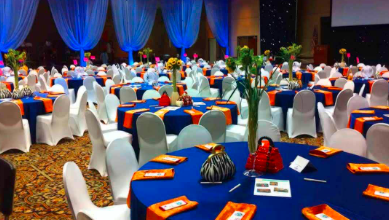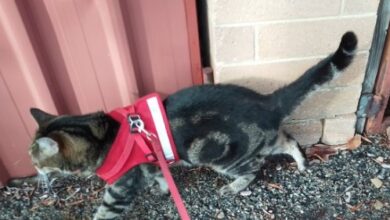Common Challenges and Solutions in Teaching R Coarticulation

R coarticulation, the process by which the sound of the letter ‘r’ affects the pronunciation of surrounding sounds, poses significant challenges in speech therapy and linguistic education. This article delves into the common challenges encountered in teaching R coarticulation and provides effective solutions for addressing these difficulties. By understanding and overcoming these obstacles, speech pathologists and educators can significantly enhance their instructional methods and improve learner outcomes.
Understanding R Coarticulation
What is R Coarticulation?
R coarticulation occurs when the presence of the ‘r’ sound influences the articulation of neighboring sounds. This phenomenon is particularly evident in languages where ‘r’ exhibits a strong phonetic presence, such as English. The complexity of R coarticulation arises from the variability in ‘r’ sounds across different dialects and languages, making it a challenging aspect of speech to master.
Importance of Teaching R Coarticulation
Teaching R coarticulation is crucial for several reasons:
- Speech Clarity: Proper coarticulation ensures clear and intelligible speech.
- Accent Reduction: Mastery of R coarticulation can help in reducing regional accents.
- Language Development: Early childhood language development benefits significantly from accurate coarticulation instruction.
Common Challenges in Teaching R Coarticulation
1. Variability in R Sounds
One of the primary challenges is the variability in ‘r’ sounds across different dialects and languages. For instance, the American English ‘r’ differs markedly from the British English ‘r’, and both differ from the Spanish ‘r’.
- Solution: Use multimedia resources to expose learners to various ‘r’ sounds. Encourage practice with native speakers of different dialects.
2. Difficulty in Visualizing and Demonstrating
Unlike some speech sounds that can be easily visualized and demonstrated (like lip movements for ‘b’ or ‘p’), the articulation of ‘r’ is more complex and internal.
- Solution: Utilize diagrams and 3D models of the oral cavity to illustrate the tongue’s position. Video recordings of the mouth in action can also be helpful.
3. Inconsistent Practice and Reinforcement
Learners often struggle with inconsistent practice, leading to variability in their coarticulation skills.
- Solution: Implement structured practice sessions with regular feedback. Use apps and software designed for speech practice to ensure consistent reinforcement.
4. Individual Anatomical Differences
Each learner’s oral anatomy can influence how they produce the ‘r’ sound, creating a unique set of challenges for each individual.
- Solution: Customize instruction based on individual needs. Conduct thorough assessments to identify specific anatomical challenges and tailor exercises accordingly.
5. Resistance to Change
Older learners, especially adults, may have ingrained speech patterns that are difficult to modify.
- Solution: Employ motivational interviewing techniques to encourage change. Highlight the benefits of mastering R coarticulation in personal and professional contexts.
Effective Solutions and Techniques
1. Phonetic Training
Phonetic training involves teaching the specific articulatory movements required for producing the ‘r’ sound.
- Steps:
- Begin with isolated ‘r’ sounds before moving to coarticulated sounds.
- Use minimal pairs (e.g., “read” vs. “reed”) to highlight differences.
2. Auditory Discrimination Exercises
These exercises help learners distinguish between correctly and incorrectly articulated ‘r’ sounds.
- Techniques:
- Play recordings of correctly and incorrectly articulated ‘r’ sounds.
- Ask learners to identify and correct the errors.
3. Kinesthetic Feedback
Providing kinesthetic feedback can help learners feel the correct tongue placement and movement.
- Methods:
- Use speech tools like tongue depressors to guide tongue placement.
- Encourage learners to use their fingers to feel the vibrations in their throat during articulation.
4. Visual Aids and Technology
Leverage visual aids and technology to enhance understanding and practice.
- Resources:
- 3D models of the oral cavity.
- Speech therapy apps that provide visual feedback.
- Videos demonstrating correct tongue placement.
5. Consistent and Structured Practice
Ensure that practice sessions are consistent and structured to reinforce learning.
- Strategies:
- Set up a regular practice schedule.
- Use a variety of practice materials, including tongue twisters and reading passages.
- Incorporate feedback sessions to monitor progress.
Read also The Beauty and Versatility of Precut Stained Glass Shapes: A Comprehensive Guide
Case Studies and Practical Examples
Case Study 1: Overcoming Dialectal Differences
Background:
A speech therapy clinic in New York City faced challenges in teaching R coarticulation to children from diverse linguistic backgrounds.
Approach:
- Conducted a preliminary assessment to understand each child’s native dialect.
- Developed customized phonetic training programs.
- Used multimedia resources to expose children to various ‘r’ sounds.
Outcome:
Children showed significant improvement in their R coarticulation skills, leading to clearer and more intelligible speech.
Case Study 2: Addressing Anatomical Differences
Background:
An adult learner struggled with R coarticulation due to unique oral anatomy.
Approach:
- Conducted a detailed oral examination.
- Created a tailored exercise regimen focusing on specific tongue movements.
- Provided kinesthetic feedback using speech tools.
Outcome:
The learner successfully overcame the anatomical challenges and improved their R coarticulation, enhancing their overall speech clarity.
Tools and Resources for Teaching R Coarticulation
1. Speech Therapy Apps
- Articulation Station: Provides visual and auditory feedback for speech practice.
- Speech Tutor: Offers detailed visualizations of tongue placement and movement.
2. Educational Websites
- ASHA (American Speech-Language-Hearing Association): Offers resources and guidelines for speech therapists.
- BBC Learning English: Provides pronunciation guides and exercises.
3. Interactive Tools
- Mirror Exercises: Encourage learners to practice in front of a mirror to visually monitor their tongue movements.
- Tongue Depressors and Oral Tools: Aid in providing tactile feedback during practice.
Conclusion
Teaching R coarticulation is a complex but crucial aspect of speech therapy and linguistic education. By understanding the common challenges and implementing effective solutions, educators and speech therapists can significantly improve their instructional methods and help learners achieve better speech clarity and intelligibility. Customized instruction, consistent practice, and the use of modern technology and tools are key to overcoming the obstacles associated with R coarticulation.
Incorporating these strategies into speech therapy programs will not only enhance the learners’ speech skills but also contribute to their overall confidence and communication abilities. As research and technology continue to advance, the future of teaching R coarticulation looks promising, offering new and innovative ways to address this essential aspect of language development.




